
12 minute read
Help Your Tablet Tooling to Pack a Punch with
from IPI Spring 2020
by Senglobal
Help Your Tablet Tooling to Pack a Punch with Essential Maintenance Measures
Ensuring tablet punches and dies are kept in optimum condition to produce high-quality tablets is critical for productivity and overall equipment efficiency (OEE). The reality is, however, that tablet compression tools are often viewed as consumable items, therefore maintenance can be seen as unnecessary and time-consuming. This can be a costly mistake and directly affect production.
Keeping tooling in good working condition not only reduces tablet press downtime, but also minimises compression problems. When combined with a management system to monitor all aspects of the punches and dies, high-quality tablets are produced quickly and efficiently.
Implementing an effective E-leaning programme can be an invaluable initiative to improve productivity.
Consequences of Poor Maintenance Practices There are many problems which are a result of badly maintained tooling from poor handling through to insignificant monitoring. One of the most common is sticking and picking. When in an optimum condition, the surfaces of a tablet punch face are usually polished to a high mirror finish (the exception to this are textured finishes designed to alleviate specific sticking issues). This finish can deteriorate over a period of time due to the continuous compaction of granules. This deterioration can lead to tabletting defects like sticking which occurs from the adhesion of the granule to the worn uneven finish. This degradation in the tool’s surface can be identified during proper assessment and rectified by cleaning granule from the surface and through polishing. When required light polishing using an automated polishing system is recommended, this should enable a smooth and efficient surface to be maintained, thus aiding the reduction of sticking and picking issues.
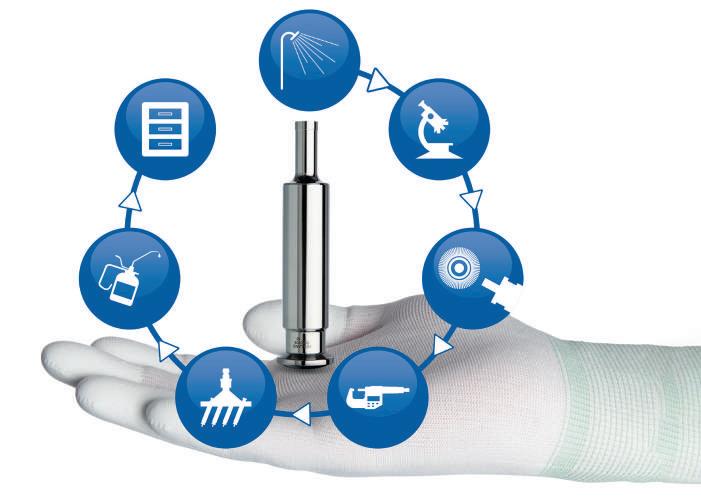
Get a Handle on it Damage through handling is another familiar problem when it comes to tooling defects. Approximately 80% of damage to punches and dies is caused accidentally when handling the punches through the production and tool care processes. This ‘accidental’ damage can lead to significant production failings. It is important to understand the delicate nature of the tooling and treat it with respect.
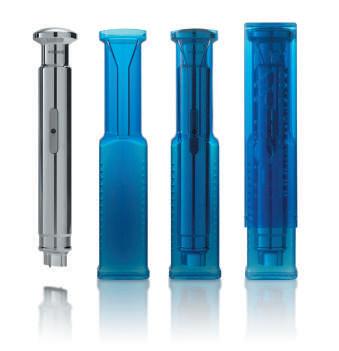
80% of damage to punches and dies is caused accidentally when handling the tooling. Ensure they are handled correctly to prevent damage.
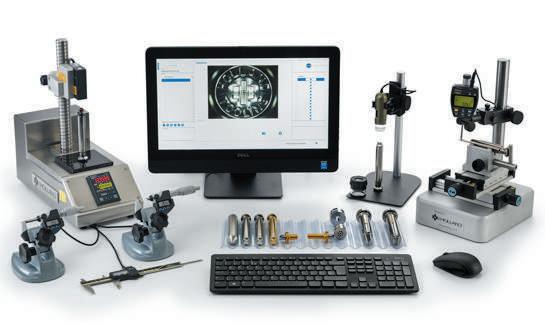
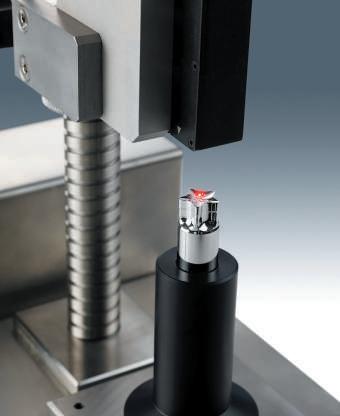
Measurement is an essential step after any repair to tooling.
There are several stages of the tablet manufacturing process where damage can take place, including unpacking the tooling, loading and unloading the tools in or out of the tablet press, during tool cleaning and maintenance procedures as well as through storage and transportation. If damage occurs, it can lead to the production of poor-quality tablets, and even further damage to both the tooling and the tablet press. It is, therefore, important to implement and operate good tool care, maintenance, storage and handling procedures.
Reducing Ringing Die bore wear or ringing is another defect which can lead to problems such as tablet capping where the tablet separates horizontally from the main body, forming a cap. This can also cause tablet ejection issues, resulting in reduced tablet output. Ringing is caused by abrasive wear and deformation from continuous forces acting on the face of the die bore. This type of wear can be reduced by utilising the zones in the die bore where the tablet is compacted or by the selection of a harder more wear resistant die material. However, unless maintenance procedures are put in place where wear can be monitored and identified through early diagnosis and assessment measures, the negative effect on tablet output will increase.
Implementing Structured Maintenance Procedures To alleviate these production problems, it is important to adopt a tried and tested maintenance procedure to ensure tablet tooling is a kept in a workable condition. The most effective process should include the seven steps of clean, assess, repair, measure, polish, lubricate and store. These are designed to provide a consistent approach to tooling maintenance and aid production at all times. The steps should become a standard operating procedure (SOP) within tablet production and used consistently to ensure punches and dies are clean, undamaged, within specification and ready for use at all times.
Cleaning is Essential The first and most critical stage in the seven-step maintenance process is to clean the tooling. Punch and die cleaning is essential for the removal of residue and to avoid product contamination. It also reduces potential production issues such as sticking. Cleaning also allows for an accurate assessment of tooling condition during further processes within any maintenance schedule. If the procedure is not carried out effectively, it will have a negative impact on the subsequent steps in the maintenance process. For example, if punches are not adequately clean, visual assessment of the punch tips and die bores for signs of wear, damage or corrosion will be difficult. This can then lead to problems like die bore ringing.
Cleaning also helps to highlight damage to the delicate punch tip edges, which are seen in the form of nicks and bruises which can cause burrs and occasionally chipping. These defects can eventually lead to more serious failures such as punch tip breakage.
When tooling is removed from the tablet press, it must be thoroughly cleaned to remove any oil or product residue, particularly from difficult-toreach areas such as embossing and keyways. One of the most reliable cleaning methods to remove all deposits from the tablet tooling is through ultrasonic cleaning. Ultrasonic baths allow for consistent cleaning results, reduced processing and operator time and reduced risk of tablet contamination. Importantly, ultrasonic cleaning allows for the whole punch to be cleaned, including in and around the embossing. It is essential, however, that the process does not cause corrosion of the tooling material, therefore a corrosion inhibitor should be used during the process.
Assess Your Tooling Step 2 and the next process in any well-planned maintenance procedure is to assess the tooling. Punches and dies should be visually inspected to establish if the tablet production process is running well and to identify whether any tooling maintenance is required. Assessment can be carried out visually using an eye glass or a high-magnification camera/lens. Close up inspection of the punch tips and cups, die bores, embossing and land will help to identify defects and wear.
One typical problem that can be identified through this step is head wear. This is when areas of a punch that are in contact with other parts of the tablet press and are subjected to
high-speed frictional and compaction forces resulting in excessive wear. It can derive from a number of causes, but more commonly it is due to punch tightness and/or poor lubrication.
It is important to remember that identifying damage off the tablet press is by far a more efficient method when it comes to time and capital than running tablet production with faulty tooling, hence, step 2 – assess is crucial.
Repair Damage Step 3 is the repair stage. This allows the user to rectify minor damage to the tooling. Light surface wear, corrosion and minor damage can be repaired and re-worked to a useable condition.
Minor damage and corrosion can be repaired using a motorised chuck with double-ended polishing motors used in conjunction with abrasive polishing accessories. In all cases, it is important to remember that repair to punches and dies should only be carried out when necessary and only by trained and experienced maintenance technicians in order to ensure that the tooling does not exceed tolerance limits. It is also worth noting that repair should not be carried out on any coated tooling as this may remove the coating from the punch.
It’s All in the Measurement Step 4 – measure – is essential after any repair. Critical tooling dimensions must be maintained within an acceptable working tolerance range to ensure accuracy and quality throughout the manufacturing process.
The equipment for measuring tablet tooling can range from simple handheld micrometers, vernier callipers and height gauges, to semi-automatic, computerised digital gauging systems. The use of digital measurement systems allows for dimensions to be taken consistently, reducing the risk of manual data entry errors.
Even if a repair has not been necessary, measuring should be carried out at regular intervals, to check for natural wear during the compaction process. The essential measurement is the critical working length of the punch, as this controls tablet thickness, weight and ultimately dosage. Importantly, as the punches are already clean and assessed, outside influences to measurement such as oil or compacted granule will not interfere with measurement data.
The Benefits of Polishing A good cleaning regime goes hand in hand with a good polishing regime. It is cleaning and polishing that delivers the most noticeable benefit in production, reducing tablet press downtime and helping to increase productivity.
Step 5, polish, is extremely important and should not be underestimated. Automated polishing is crucial to ensure punches are evenly polished to a consistent finish. This stage also helps to produce the optimum and consistent tooling condition. By following this step, costly tablet press downtime caused through poorly maintained tool surfaces will be reduced.
Polishing can be achieved through manual or automated methods but due to the controlled and repeatable process, adoption of an automated polishing regime would always be preferable as all punches are polished to a uniform finish.
Manual polishing can be unevenly abrasive and extra care must be taken not to deform the tip profile and embossing, causing a deviation from the tablet specification. Extensive polishing of die bores is not recommended as this can easily alter the size and geometry of the bore, leading to ejection problems and incorrect tablet size, weight and dosage. Only light polishing or cleaning should be undertaken, and the end result should be a mirror finish and smooth tooling surface.
Protect and Preserve Step 6 is lubrication, a necessity as it serves to protect, preserve and support continuous press tooling operations. A non-toxic, FDA compliant oil or grease is recommended for this step, and a product that offers machine component protection and lubrication performance with a wide temperature range, to ensure it can be used in all equipment.
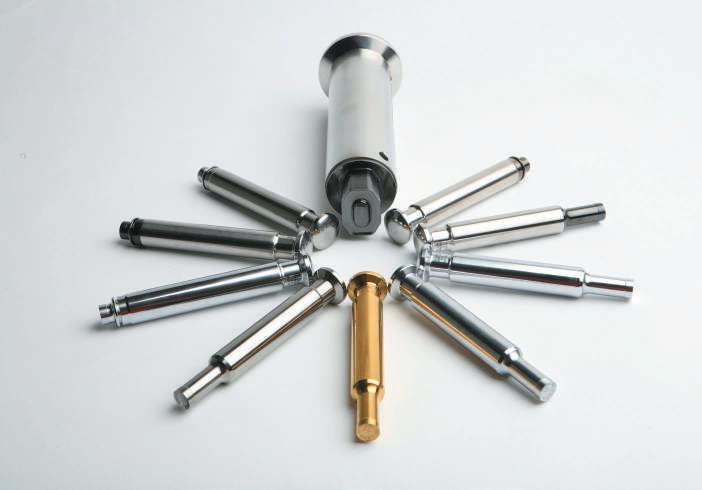
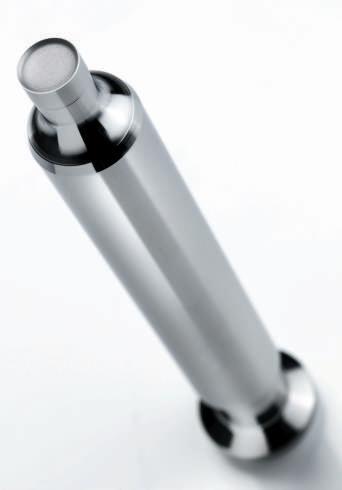
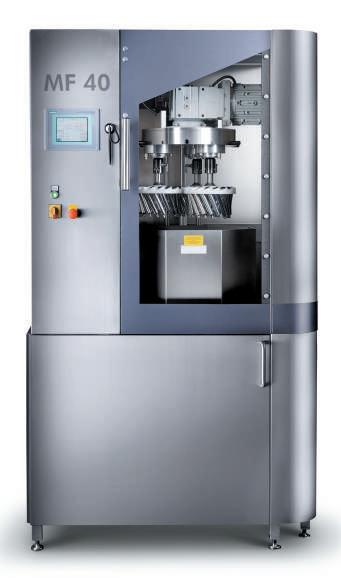
Polishing using an automated polishing system is recommended to enable a smooth and efficient surface to be maintained.
Store Securely Last but not least is step 7, store. Tooling storage and transportation should be specifically designed and developed with high security and safety handling considerations a priority, as this reduces the probability of damage and deterioration.
There are many methods for storing punches and dies, from specially designed plastic storage boxes to custom designed and built storage cabinets, all of which provide high levels of protection.
The tooling itself must be separated to ensure it avoids contacts with other punches and so that the tooling condition does not deteriorate during storage. Due to the nature and weight of tablet tooling, storage should also ensure safe handling for operators, and so tools should only be moved when necessary.
Apply the Seven Steps to Your Production Application of the seven-step process will have a direct impact on the reduction of many common tablet and tooling problems, resulting in a betterquality end product and direct time and cost savings for the tablet manufacturer.
It is important to maintain longevity and extract the maximum life from tablet tooling. Following a consistent seven-step process will aid in this ideal to ensure punches and dies are always ready for production, with the assurance that they are clean, undamaged and within specification.
Manage Your Tools Effectively We now know why the application of a planned seven-step maintenance procedure is important for productivity and OEE, but how do we know it is being adhered to?
To establish compliant, efficient and accurate maintenance of punches and dies, it is important to implement an in-depth computer-based monitoring system. This should work seamlessly alongside your planned seven-step maintenance process.
Within pharmaceutical manufacturing, the importance of knowing where tools are, and what condition they are in, should be a priority. Without this information, either unnecessary tooling replacements are made, reducing productivity, or punches are deployed when they should be in maintenance or replaced. This then leads to problems with the end tablet when it is found that the tooling being used does not meet the highly demanding process of tablet manufacture. Rejected tablets, wasted formulation and press downtime is the usual result. A tool management system will help to assess and monitor the life of the tools, prioritising maintenance activity by creating an ‘action’ list. Any tool problems like wear to punch heads can be detected before they impact on production.
A tool management system is not just important for maintenance history, it is also essential in satisfying regulatory procedures and complying with legal requirements in tablet production. It can consistently record a completely 21 CFR part 11 compliant audit trail of all production and maintenance. The data can also provide information to effectively measure areas of performance by way of showing what and how many products have been produced and a summary of any production issues experienced. Overall, it ensures that tooling is never a cause for delay in the production schedule. Training – the Icing on the Cake When it comes to tablet tool maintenance, it is all very well implementing a seven-step process and tool management system, but unless all those involved in the tablet production are singing from the same hymn book, these processes may not work as effectively as they could.
Online training may be the answer. Implementing an effective e-leaning programme can be an invaluable initiative to improve productivity and ultimately the quality of the end product in pharmaceutical manufacture.
Investment in tool management software and maintenance processes can be compromised without trained and knowledgeable staff in place. The workforce must know how to undertake tooling care maintenance efficiently and the processes involved in managing the procedures.
Make Tool Maintenance Routine Adopting a simple structured tooling maintenance process is essential to obtain the maximum life from punches and dies. Its success comes down to three main elements: 1 – the implementation of a seven-step maintenance process, 2 – a management system to monitor all tools and finally, 3 – focused training so all operators and managers work to the same standards and procedures. Applying these recommended ‘best practices’ will extend the tool’s usable life significantly, resulting in increased productivity and tablet quality.
Alex Bunting
Alex manages the marketing team at I Holland, is a graduate of English and member of the Institute of Digital Marketing. He joined I Holland in April 2008 having spent the previous years working in Environmental Science. Alex was instrumental in the design of the 2010 edition of the widely adopted Eurostandard, educational animations and hosts I Holland’s extensive webinar program.










